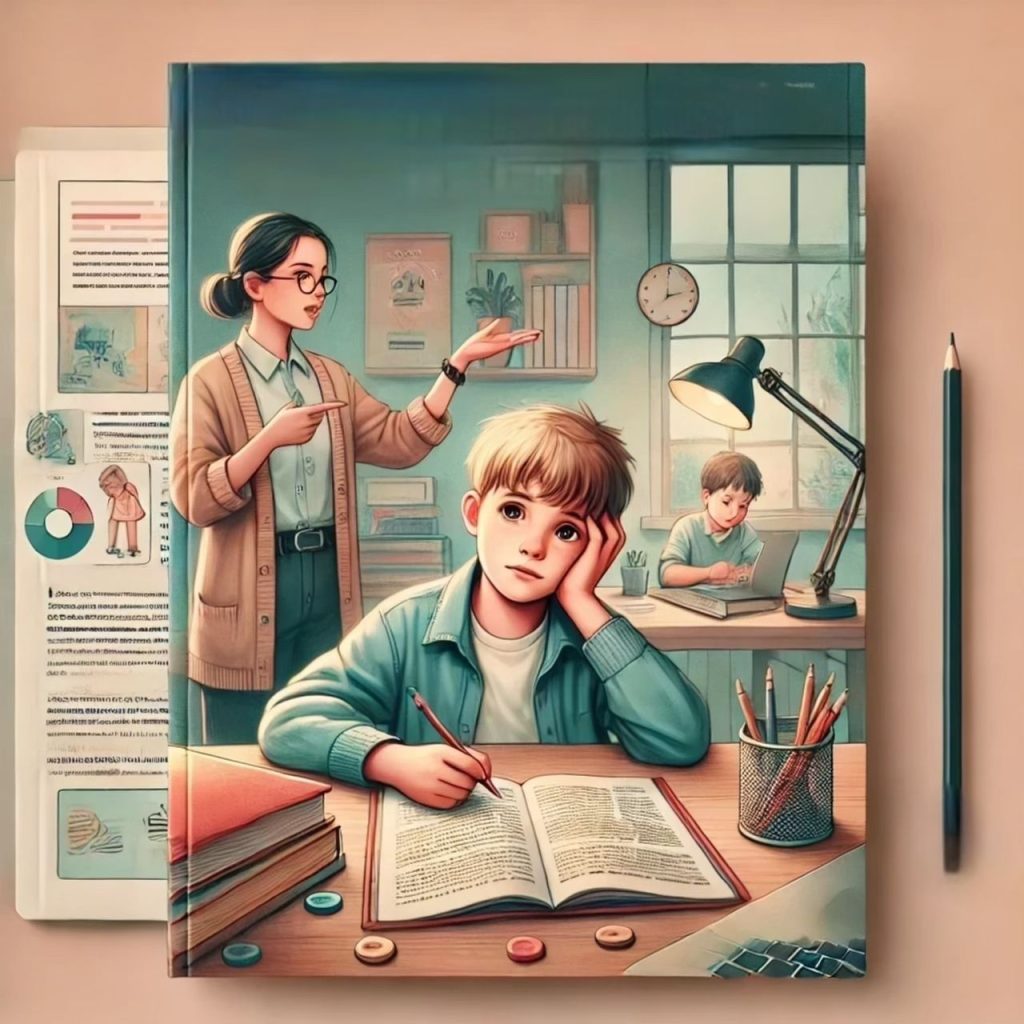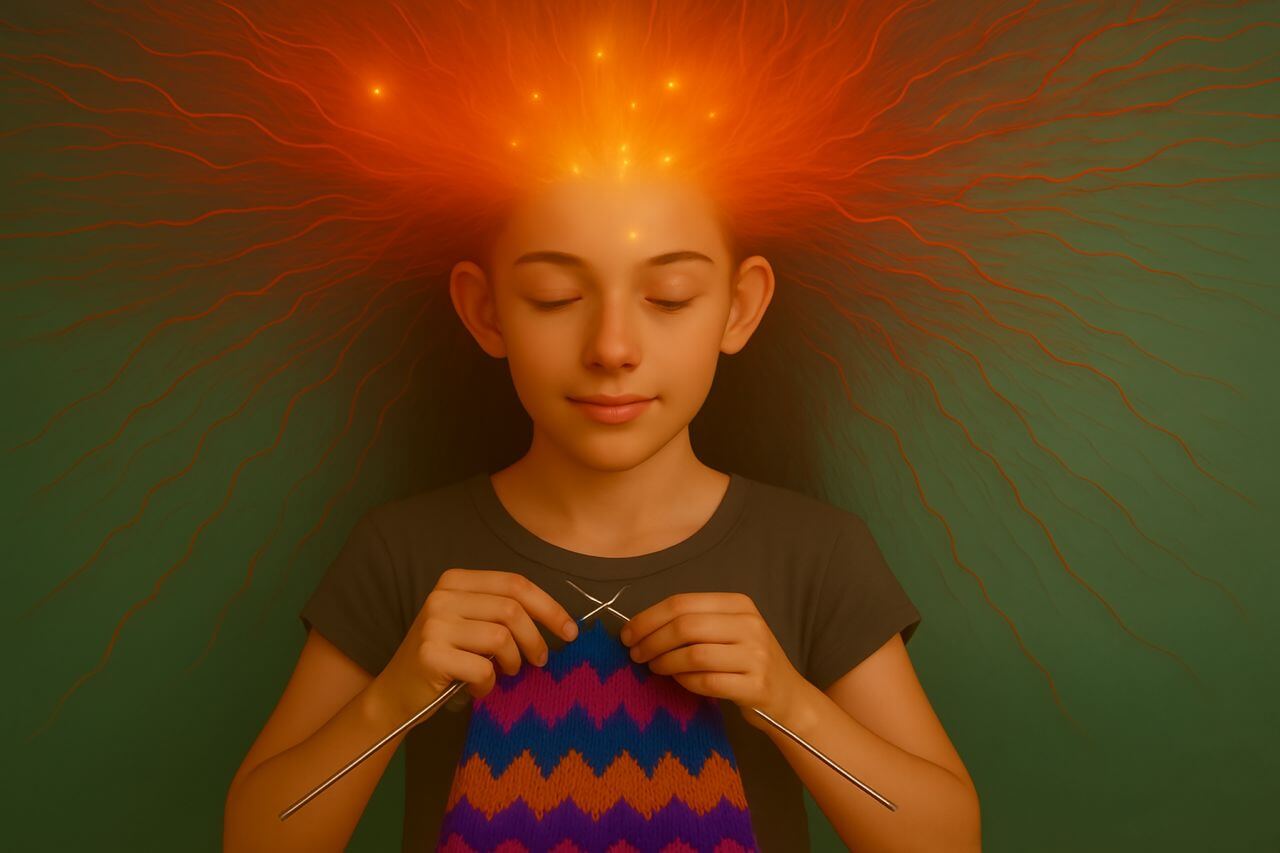
How to Diagnose ADHD in Children
ADHD (Attention Deficit Hyperactivity Disorder) is one of the most common neurodevelopmental disorders in children, significantly impacting their academic and social lives. Did you know that more than 9.4% of children in the United States are diagnosed with this disorder? Early diagnosis and intervention are crucial for managing symptoms and improving the quality of life for children with ADHD. This comprehensive guide aims to provide detailed insights into the diagnostic process, common symptoms, differential diagnosis, treatment options, parental strategies, and understanding ADHD.
Recognizing the Symptoms

ADHD symptoms are typically divided into two categories: inattention and hyperactivity/impulsivity. These symptoms must be present for at least six months and be inappropriate for the child’s developmental level.
Inattention
- Difficulty sustaining attention in tasks or play activities
- Frequent careless mistakes in schoolwork or other activities
- Often seems not to listen when spoken to directly
- Difficulty organizing tasks and activities
- Avoids or is reluctant to engage in tasks that require sustained mental effort
- Often loses items necessary for tasks or activities
- Easily distracted by extraneous stimuli
- Forgetful in daily activities
Hyperactivity/Impulsivity
- Fidgets or squirms in seat
- Leaves seat in situations where remaining seated is expected
- Runs or climbs in inappropriate situations
- Unable to play or engage in leisure activities quietly
- Always “on the go” or acts as if “driven by a motor”
- Talks excessively
- Blurts out answers before questions have been completed
- Difficulty waiting for their turn
- Interrupts or intrudes on others
For a more detailed description of ADHD symptoms, you can read our article on Understanding ADHD in Women: Symptoms, Diagnosis, and Treatment.
Diagnostic Process: How to Identify ADHD in Children

Diagnosing ADHD in children involves multiple steps and gathering information from various sources, including parents, teachers, and healthcare providers.
1. Medical and Family History
Collecting a comprehensive medical and family history is the first step in the diagnostic process. This includes:
- Detailed information about the child’s health history, including prenatal and birth history
- Early development milestones
- Family history of ADHD or other mental health conditions
2. Behavioral Questionnaires

Behavioral questionnaires and rating scales are essential tools for gathering information about the child’s behavior. Commonly used scales include:
- Conners’ Rating Scales: Used to assess a wide range of behavioral, emotional, and social problems.
- ADHD Rating Scale: Specific to ADHD symptoms and used to evaluate the frequency and severity of behaviors.
3. Clinical Interviews
Conducting clinical interviews with the child, parents, and teachers provides valuable insights into the child’s behavior, school performance, and social interactions. These interviews help to:
- Assess the presence and impact of ADHD symptoms
- Understand the child’s strengths and challenges
- Gather information about the child’s daily routines and behaviors
4. Observation
Observing the child’s behavior in different settings, such as at home and school, is crucial for assessing the consistency of ADHD symptoms across various environments. This step helps to:
- Identify patterns of behavior
- Evaluate the impact of ADHD symptoms on daily functioning
5. Psychological Testing

Administering psychological tests can provide a comprehensive evaluation of the child’s cognitive abilities, academic achievement, and emotional functioning. These tests help to:
- Rule out other conditions that may mimic ADHD symptoms
- Assess the child’s strengths and weaknesses
- Provide a baseline for monitoring progress over time
Statistical Overview
According to the Centers for Disease Control and Prevention (CDC), approximately 9.4% of children aged 2-17 years in the United States have been diagnosed with ADHD. Here is a summary of the global prevalence of ADHD in children:
| Region | Prevalence (%) |
|---|---|
| North America | 8.4 |
| Europe | 5.0 |
| Asia | 2.5 |
| Africa | 1.4 |
| Oceania | 7.5 |
| Global Average | 5.3 |
Source: World Health Organization (WHO)
Differential Diagnosis
ADHD symptoms can overlap with other conditions, making it essential to rule out alternative explanations. Some conditions to consider include:
- Learning Disabilities: Issues with reading, writing, or math skills that can impact academic performance.
- Anxiety Disorders: Excessive worry or fear that can affect concentration and behavior.
- Depressive Disorders: Persistent feelings of sadness or loss of interest that can mimic inattention.
- Oppositional Defiant Disorder (ODD): Defiant and oppositional behavior that can overlap with ADHD symptoms.
- Autism Spectrum Disorder (ASD): Social communication challenges and restricted interests that can coexist with ADHD.
For more insights into diagnosing co-occurring conditions, visit our article on Robert James: ADHD & Autism Diagnosis.
Modifiable Risk Factors
Several modifiable risk factors can affect the diagnosis and management of ADHD:
- Diet and Nutrition
- Certain dietary factors, such as high sugar intake and food additives, may exacerbate ADHD symptoms. Encouraging a balanced diet rich in fruits, vegetables, and whole grains can help manage symptoms. Learn more about the impact of diet on ADHD in our article on Living with Lipedema: Mental Health, ADHD Links, Treatment Challenges, and the Path to Acceptance.
- Sleep
- Ensure the child gets adequate sleep, as sleep deprivation can worsen ADHD symptoms. Establishing a consistent sleep routine can be beneficial.
- Physical Activity
- Regular physical activity can help reduce hyperactivity and improve concentration. Encourage participation in sports or other physical activities.
- Environmental Factors
- Minimize exposure to environmental toxins, such as lead, which can impact cognitive development. Creating a safe and supportive environment is essential.
Understanding ADHD

Understanding ADHD is crucial for parents, teachers, and caregivers to provide the necessary support and interventions. ADHD is not a result of poor parenting or lack of discipline; it is a neurological condition that requires a comprehensive approach to management.
Parental Strategies
Parents play a vital role in managing a child’s ADHD. Here are some strategies that can help:
- Create a Structured Environment
- Establish routines for daily activities, such as homework, meals, and bedtime. Consistency helps children with ADHD feel secure and understand expectations.
- Use Positive Reinforcement
- Praise and reward your child for positive behaviors and accomplishments. Positive reinforcement can motivate children to continue good behaviors.
- Set Clear Expectations and Consequences
- Clearly communicate rules and expectations to your child. Consistent consequences for misbehavior help children understand the impact of their actions.
- Collaborate with Teachers
- Work closely with your child’s teachers to develop an individualized education plan (IEP) or a 504 plan that provides necessary accommodations and support in the classroom.
- Seek Professional Help
- Consult with healthcare providers, psychologists, and therapists who specialize in ADHD. Professional guidance can help develop effective strategies and interventions tailored to your child’s needs. If you are looking for a specialized center for diagnosing and treating ADHD, you can take advantage of our services at Eton Psychiatrists.
For more detailed guidance on parental strategies, visit our Services Page.
Treatment Options for Children with ADHD
Once a diagnosis is confirmed, various treatment options can help manage ADHD symptoms:
1. Behavioral Therapy
Behavioral therapy, including parent training and classroom interventions, can help manage ADHD symptoms. Techniques include:
- Positive reinforcement
- Structured routines
- Clear expectations and consequences
2. Medication
Medication is often used to help control ADHD symptoms. Common medications include:
- Stimulants: Methylphenidate and amphetamines are commonly prescribed and effective for many children.
- Non-Stimulants: Atomoxetine and guanfacine may be used for children who do not respond well to stimulants. For more details on ADHD medications, visit WebMD’s ADHD Medication Chart.
3. Educational Support
Individualized Education Programs (IEPs) and 504 plans can provide accommodations and support in the school setting. These plans may include:
- Extended time for tests
- Preferential seating
- Modified assignments
For more information on treatment options, read our article on ADHD Treatments for Adults.
How ADHD Affects School Performance and Strategies to Help

ADHD can significantly impact a child’s performance in school. Common challenges include difficulty staying focused, hyperactivity, and impulsive behavior. Strategies to help students with ADHD include:
- Providing a quiet and distraction-free workspace
- Breaking tasks into smaller, manageable steps
- Using visual aids and organizers
- Offering regular breaks to allow physical movement
Frequently Asked Questions
1. What is ADHD?
ADHD (Attention Deficit Hyperactivity Disorder) is a neurodevelopmental disorder characterized by symptoms of inattention, hyperactivity, and impulsivity. For more information, visit our article on What’s ADHD?.
2. How is ADHD diagnosed in children?
ADHD is diagnosed through a comprehensive evaluation, including medical history, behavioral questionnaires, clinical interviews, observation, and psychological testing. Read more about the diagnosis process in our Complete Guide.
3. Can ADHD be treated?
Yes, ADHD can be treated with a combination of behavioral therapy, medication, and educational support. Learn more about our ADHD Treatments for Adults.
4. What are the risks of untreated ADHD?
Untreated ADHD can lead to various physical and mental health issues, including academic difficulties, social problems, and increased risk of substance abuse. For more insights, check out our article on Navigating Rejection Sensitivity: Understanding RSD in ADHD and Finding Strength in Self-Awareness.
5. How can parents support a child with ADHD?
Parents can support their child by providing structure, encouraging healthy habits, and seeking professional help. For detailed guidance, visit our Services Page.
Conclusion
ADHD is a complex disorder that requires a comprehensive and multidisciplinary approach to diagnosis and treatment. By understanding the symptoms, seeking professional help, and implementing effective strategies, parents, teachers, and healthcare providers can help children with ADHD lead fulfilling lives. Early intervention, consistent support, and appropriate treatments can significantly improve the quality of life for children with ADHD and their families.
Call to Action
If you think your child may have ADHD symptoms, take action today for a professional evaluation! Visit our Services Page to learn more.



